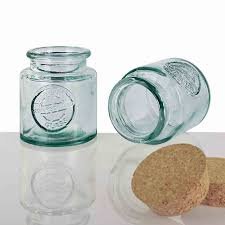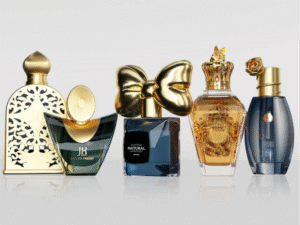In the world of sustainable beekeeping, the choice of honey jars may seem like a small detail, but it plays a significant role in promoting environmental conservation. Honey jars, often overlooked, serve as both storage and marketing tools. As eco-conscious consumers demand more sustainable options, it has become essential for beekeepers to opt for eco-friendly honey jars. In this post, we explore the top five eco-friendly honey jars, highlighting their benefits and how they support sustainable beekeeping practices.

Table of Contents
1. What Makes a Honey Jar Eco-Friendly?
Choosing eco-friendly honey jars requires more than just looking for recyclable options. Factors like the materials used, the lifespan of the packaging, and the overall sustainability of the jar are all crucial considerations.
Materials Used in Eco-Friendly Honey Jars
Glass vs. Plastic: Glass is a leading material in eco-friendly packaging due to its 100% recyclability. Unlike plastic, glass doesn’t degrade in quality over time and can be recycled indefinitely without losing its structural integrity. This makes glass a much more sustainable choice compared to single-use plastic honey jars, which contribute to landfills and ocean pollution.
Recycled Glass: Jars made from recycled glass are a step further toward sustainability. Using recycled glass reduces the demand for raw materials and lowers the carbon footprint associated with the manufacturing process. It also helps keep waste out of landfills, aligning perfectly with the goals of sustainable beekeeping.
Biodegradable Materials: New innovations include honey jars made from PLA (Polylactic Acid), a plant-based material that is compostable under industrial conditions. These jars offer a zero-waste solution, appealing to both beekeepers and eco-conscious consumers who prioritize sustainability.
Sustainability Factors to Consider in Honey Jar Selection
Lifespan and Reusability: A good eco-friendly honey jar should be reusable and durable. Glass jars, for instance, can be used repeatedly without degrading in quality, which reduces waste and promotes sustainability.
Carbon Footprint: The carbon emissions associated with producing, transporting, and recycling honey jars are critical to sustainability. Jars made from locally sourced materials or recycled content have a lower carbon footprint than those produced from virgin resources.
Recyclability: Always consider how easily the jar can be recycled at the end of its life cycle. Glass jars and metal lids are highly recyclable, whereas certain types of plastic or mixed-material packaging may pose challenges in recycling processes.
Eco-Friendly Labels and Packaging for Honey Jars
Even the labels and packaging around the jar should be sustainable. Using recycled paper labels, biodegradable adhesives, and non-toxic inks ensures the entire product aligns with eco-friendly standards. Minimalist packaging that reduces waste is also a key trend, further lowering environmental impact.

2.Why Eco-Friendly Honey Jars Matter for Sustainable Beekeeping
Sustainable beekeeping is more than just about how bees are raised—it extends to how honey is harvested, packaged, and sold. Eco-friendly honey jars are a fundamental part of this process.
The Environmental Impact of Traditional Honey Jars
Traditional plastic honey jars contribute significantly to global plastic pollution. Each year, billions of single-use plastic containers are discarded, with a large percentage ending up in oceans, harming wildlife, and polluting ecosystems. Choosing sustainable alternatives like glass and recycled materials reduces this harmful environmental impact.
Case Study: A study conducted by the Ellen MacArthur Foundation found that only 9% of all plastics ever produced have been recycled. By switching to eco-friendly glass jars, a small beekeeping operation could significantly reduce its environmental footprint.
How Sustainable Packaging Helps Beekeepers
Eco-friendly honey jars can enhance the branding of beekeeping businesses. Consumers today are more likely to purchase products from brands that demonstrate a commitment to the environment. By using sustainable packaging, beekeepers can tap into the growing market of eco-conscious buyers, potentially increasing sales and customer loyalty.
Additionally, many countries are introducing stricter regulations on single-use plastics. Switching to eco-friendly honey jars early not only positions businesses as environmental leaders but also helps them stay ahead of regulatory changes.
Preserving Honey Quality with Sustainable Jars
Honey, with its delicate flavor and health properties, is best preserved in glass jars. Glass honey jars offer excellent protection from external factors like light and moisture, which can affect the quality of honey over time. Unlike plastic, glass does not interact with the contents, ensuring that the honey’s natural flavors remain intact.

3.Top 5 Eco-Friendly Honey Jars for Sustainable Beekeeping
Now that we’ve established the importance of eco-friendly packaging, let’s dive into the top five eco-friendly honey jars for sustainable beekeeping.
1. Glass Honey Jars with Bamboo Lids
These honey jars are a great eco-friendly option due to their recyclable glass body and biodegradable bamboo lid. The bamboo used for the lids is a renewable resource that grows rapidly and requires fewer resources to cultivate.
- Benefits: 100% recyclable glass, biodegradable bamboo lid.
- Best for: Small to medium-sized beekeeping businesses looking for an aesthetically pleasing, eco-friendly option.
2. Recycled Glass Jars with Cork Stoppers
Made from 100% recycled glass, these jars feature natural cork stoppers, which are biodegradable. Cork is harvested without damaging trees, making it a sustainable material.
- Benefits: Fully recyclable, biodegradable cork.
- Best for: Beekeepers focused on rustic, eco-friendly packaging that appeals to sustainability-conscious consumers.
3. Biodegradable Honey Jars Made from PLA
PLA is a plant-based plastic that’s fully compostable under the right conditions. These jars are a great option for beekeepers wanting to minimize waste.
- Benefits: Biodegradable, made from renewable resources.
- Best for: Environmentally-conscious brands that emphasize zero waste.
4. Glass Jars with Metal Lids
Glass jars paired with recyclable metal lids are another durable and eco-friendly option. Both materials can be reused and recycled, making this a popular choice for long-term sustainability.
- Benefits: Highly durable, both glass and metal are recyclable.
- Best for: Beekeepers looking for a classic, long-lasting packaging solution.
5. Upcycled Mason Jars for Honey Storage
Mason jars, repurposed for honey storage, offer a vintage aesthetic and promote reusability. These jars are popular for DIY packaging and gifting.
- Benefits: Extends the lifespan of jars, reduces waste.
- Best for: Small-scale beekeepers or hobbyists interested in zero waste.
4.How to Choose the Right Eco-Friendly Honey Jar for Your Beekeeping Business
Factors to Consider When Selecting Honey Jars
- Size and Capacity: Depending on the volume of honey you produce, you’ll need jars that can accommodate different quantities. Table below shows typical jar sizes and their common uses:
| Honey Volume | Jar Size (oz) | Ideal Use Case |
|---|---|---|
| 8 oz | Small gifts | Best for gift sets, or sampling |
| 16 oz | Medium jars | Suitable for medium production |
| 32 oz | Large jars | Best for large batches or bulk sales |
Style and Design: The design of your honey jar can be a powerful marketing tool. Choosing a unique jar shape or adding custom labels can set your brand apart.
Cost-Effectiveness: Balancing sustainability with affordability is key. Look for bulk options or wholesale deals to keep costs down without compromising on quality.
Where to Buy Eco-Friendly Honey Jars
- EcoJarz: Specializes in eco-friendly lids and jars for food and honey storage.
- Freund Container: Offers a variety of recycled glass honey jars and bulk buying options.
- Uline: Provides a wide range of glass jars, metal lids, and other sustainable packaging options.
Tips for Marketing Your Eco-Friendly Honey Products
- Leverage Social Media: Showcase your eco-friendly honey jars on platforms like Instagram and Facebook to reach environmentally-conscious customers.
- Highlight Sustainable Practices: Emphasize your use of eco-friendly packaging in your marketing materials.
- Collaborate with Influencers: Partner with eco-conscious influencers to promote your sustainable products.
Conclusion
The future of beekeeping lies in adopting sustainable practices, and eco-friendly honey jars are a significant part of this journey. By choosing the right jars, you not only contribute to a healthier planet but also attract customers who prioritize environmental responsibility. Sustainable packaging is more than a trend—it’s a necessity for future-focused beekeeping businesses.



